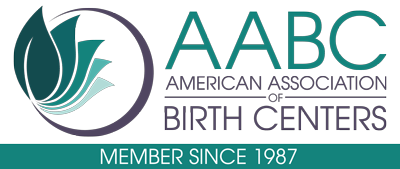 Back up hospitals and obstetricians: Best Start Birth Center is stocked with the necessary medications and equipment to handle most birth emergencies. If you have an emergency and need to go to a hospital, please call the on-call midwife so that she may fax your records. If a medical condition or other factor prevents birth at Best Start, care will be transferred to a hospital where we know the providers will take good care of you and your family. Ask your insurance which hospitals they cover. Your midwife will help you choose a back-up provider from in the event that pregnancy or birth become high risk.
Back up hospitals and obstetricians: Best Start Birth Center is stocked with the necessary medications and equipment to handle most birth emergencies. If you have an emergency and need to go to a hospital, please call the on-call midwife so that she may fax your records. If a medical condition or other factor prevents birth at Best Start, care will be transferred to a hospital where we know the providers will take good care of you and your family. Ask your insurance which hospitals they cover. Your midwife will help you choose a back-up provider from in the event that pregnancy or birth become high risk.
Coming to Terms with a Hospital Transfer: Families planning a birth center birth don’t intend to transfer to the hospital, but occasionally, that’s what’s best for mom and/or baby. Most transfers are not emergencies. The number one reason for transfer is a labor that is no longer progressing. Sometimes a pregnancy has become high risk for common pregnancy conditions such as pre-eclampsia, post-term gestation, or thick meconium fluid. And sometimes a labor can last for days and a mom can decide that an epidural is the best choice for her in her exhaustion. About 15% of moms nationwide planning out-of-hospital birth will transfer to the hospital, and of those transfers, the majority still have a normal vaginal birth. While a change of plans can be a big disappointment, we’d like to discuss ways to come to terms with a hospital transfer. Take a look at our binder in the lobby to hear reviews from clients who have transferred and how they were still very well taken care of by the Best Start team. You can view hospital statistics on Leapfrog.
- You know you did everything you could.
At Best Start Birth Center, we work with you from the beginning of your pregnancy to do everything in our power to prevent high risk conditions from developing in the first place. In other maternity systems, sometimes there’s just not enough time for providers to be able to talk about nutrition, immune health, and all the other ways that we increase your chance of a healthy birth.
- You know it’s truly best for the health of mom and/or baby.
We love to boast about offering truly evidence based care, not care that is based on the financial bottom line, most efficient for an assembly line maternity care system, or just provider convenience. This means that when we do recommend interventions, it is truly a needed treatment that is based in solid evidence. And you don’t have to take our word for it either! We love when you bring your own researched evidence to us for discussion and even can refer you to resources where you can read about the risks & benefits of different interventions.
- Epidurals are a tool in the tool bag.
So you planned to labor without an epidural. And then… the plan changed. Maybe your labor lasted for days on end without sleep. Maybe your baby decided to stay in a position that evoked an especially excruciating case of the infamous ‘back labor.’ Sometimes an epidural can relax a mother both mentally/emotionally (by taking away pain) as well as physically (relaxes muscles and tendons, allows a mom to get some much needed sleep) so that a baby can turn onto a more ideal position and/or so the hormones in our bodies can flow and dilate the cervix as they do when the mother is in a relaxed state. An epidural is one tool in the midwife tool bag. We strive to offer many alternatives, but occasionally, we also cannot deny that it’s a very useful tool for some cases.
- Interdisciplinary teams yield the best outcomes.
In the event of a hospital transfer, we want you to rest assured that the care you receive will be in you and your baby’s best interest. Our local hospital midwives, physicians and nurses are an extended arm of our team. The process of transferring your records is smooth and provides your new team with everything they need to take the best care of you. They are always available and provide the expert care our transferred mothers and babies need. They are an integral part of why we have the good outcomes we are so proud of, and grateful for. This network of support allows Best Start Birth Center to provide natural childbirth services to our clientele. Our excellent outcomes for mothers and babies are a part the result of the expert care provided by our local hospital physicians and nurses. Please remember that while the atmosphere and procedures in the hospital are quite different from those at Best Start, like us, they are dedicated to the health and well-being of mothers and babies and deserve the support and respect of all of us.
- You are still part of the Best Start family.
After a hospital transfer, we want to see you again! We want to meet your baby. We want to hear your birth story. We want to continue your postpartum care. We want to take care of you in your next pregnancy. We want to continue your well-woman care. We also offer a weekly postpartum support group. So don’t be shy!
- A few words on Cesareans:
Having a cesarean birth can be one of the more disappointing outcomes. Best Start proudly maintains an extremely low cesarean rate (See our statistics page, a rate which is only accomplished with a low risk clientele enrolled in holistic midwifery care. Some women find it helpful to know that nationwide, 1 in every 3 babies are born via cesarean, so you are not alone! Numerous support groups exist online and locally. The Best Start midwives are fully qualified and experienced in post-operative cesarean care and would love to see you back to perform your 1-2 week incision check. We offer extra appointments to support breastfeeding success, which can sometimes be more difficult after cesarean. We also acknowledge that some women have higher rates of depression and post-traumatic stress after a cesarean; know that while these are common feelings, you should also schedule an appointment with a midwife or come to our weekly postpartum support group to process and connect with any additional services that may be needed. In your postpartum appointments, we also take time to address the reason for the cesarean and what we can do to maximize the chance of vaginal birth for the next pregnancy if that is your goal.
Scripps Mercy Hospital
- The closest hospital – birth center emergencies are transferred here.
- 24/7 coverage of obstetricians and nurses will care for you.
- You may take a virtual hospital tour here: https://youtu.be/IeqoGaw87tM or call 1-800-SCRIPPS to register for an in-person tour
- 4077 Fifth Ave, San Diego CA 92103 (main entrance, proceed to elevators in back of lobby, go to 3rd floor Labor & Delivery, don’t enter via ER)
What to Expect During a Hospital Stay:
- Electronic fetal monitoring:
- A device used to continuously monitor the baby’s heartrate and the frequency of contractions
- Provides valuable information on how the baby is tolerating labor contractions
- Most often monitoring is performed with an external monitor. If there is a concern that the external monitors are not providing enough information, the provider will discuss an option for internal monitors, including risks and benefits.
- Intravenous (IV) Access and IV Fluids:
- Upon admission to the hospital an IV will be placed
- IV fluids are given during labor to prevent dehydration, maintain blood pressure, and to improve blood flow to the uterus when a baby might not be tolerating contractions.
- IV access also ensures the nurse or physician can administer emergency medications quickly if needed.
- Pain Management:
- Aromatherapy: to promote relaxation we offer aromatherapy if desired
- IV Narcotics: small doses can be used to help with labor pain. They should not be used if you are very close to delivery because they can affect the baby’s respiratory effort immediately after birth.
- Epidurals: A thin catheter is placed in the spine by an anesthesiologist. The catheter is connected to a pump and provides continuous anesthetic to numb the abdomen and lower body. You will receive a bag of IV fluid prior to epidural placement to prevent low blood pressure.
- Antibiotics
- If you have tested positive for the bacteria Group Beta Strep (GBS) or develop symptoms of an infection such as fever, high heart rate, or foul-smelling amniotic fluid, you will be given IV antibiotics to treat the infection and to help prevent newborn sepsis.
- Labor Progress
- The goal is to have a vaginal delivery. If labor progress stalls or an expedited delivery is needed for other factors such as infection or high blood pressure, the physician may recommend interventions.
- Cervical Ripening medications – may be used to start labor
- Oxytocin is a naturally occurring hormone that can be given via IV at low doses to strengthen labor contractions
- Artificial Rupture of Membranes – breaking the bag of water releases naturally occurring hormones to increase the strength of contractions
- Consent and Decisions about your care
- You will receive education about risks/benefits for suggested interventions
- Sometimes in labor, decisions need to be made in a timely or urgent manner because a delay may increase the risk of harm to you or your baby.
- Emergent, Urgent, or Routine?
- Emergent: if no action is taken it may be life threatening.
- Urgent: something that needs to be performed in a timely manner otherwise it can lead to increased risks of harm.
- Routine: there is no immediate risk to delaying the recommended intervention.
- Emergent Delivery:
- If the baby is in distress or there is another medical reason such as heavy bleeding, an emergent cesarean section may be needed.
- If you are already pushing, a small suction cup, or forceps may be an option to assist a vaginal delivery





